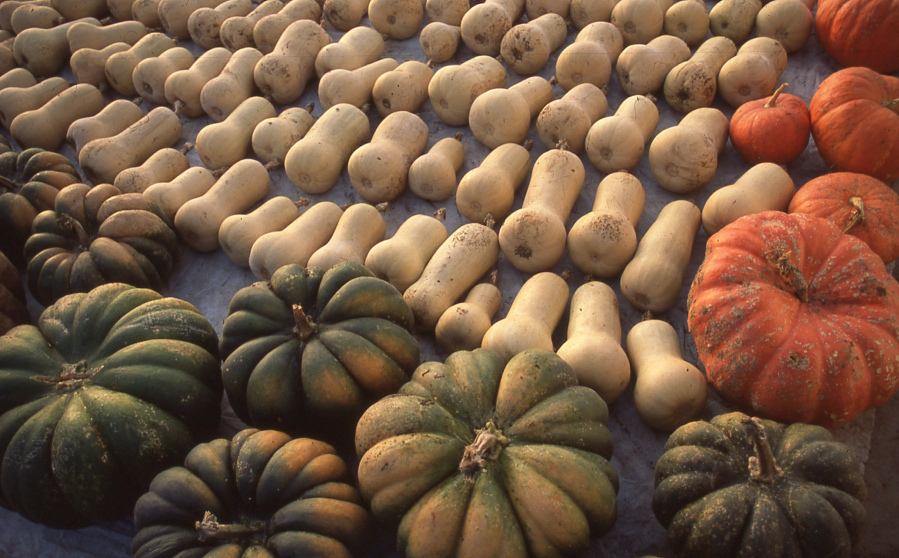The word “cure” can be confusing when applied to vegetables. It’s not about the resolution of maladies but rather their prevention. Like the ecclesiastical “curate” or the museum “curator,” it comes from the Latin curare, which means “to take care of.” And it overlaps with various food-preservation techniques such as drying peppers, smoking fish and giving bacon a salt or sugar “cure.”
Offhand, I can think of four common garden crops that require a curing period after harvest.
Unlike potatoes, carrots and beets, none requires a cold, moist root cellar to make it through the winter.
Take onions. In my kitchen, I must use an average of at least one onion a day, and even though I have a late-summer-planted onion crop in the ground that will spend the winter under low plastic tunnels, I’ve taken pains to ensure that my summer-harvested onions will keep well in storage until spring.
The onion varieties that grow through the winter are large and sweet but not made for long keeping. But the full-grown keepers harvested now contain pungent, sulfurous compounds that help preserve them — if they are properly cured. They won’t keep well until their green tops have been allowed to dry out and the necks tighten, to prevent rot. After the onion foliage flops over, signaling that growth has stopped, the onions are pulled up. If the weather is nice, the curing process starts by laying them in rows on the soil in which they grew. If the weather’s wet, they go straight to a warm, dry spot with good air circulation, where they are laid out in a single layer with the tops cut back to one inch. When their necks are thoroughly dry, the bulbs can go into storage in a dry, dark, cold but frost-free space.
Your garlic crop is cured and stored the same way. With both, be careful not to nick or bruise the bulbs.
Winter squash should be cured before storage because even if you have babied them and kept them from getting nicked, curing will help heal any wounds that could lead to rot. The curing process also improves flavor dramatically. A butternut squash may have proclaimed its ripeness by turning tan. It won’t be delicious until a month or so after harvest.
The curing period lasts about two weeks and is best done in a dry area with a temperature of about 85 degrees. Such a warm place in October can be hard to find. After curing, the squash should be stored in a place with temperatures in the mid- to upper 50s.
Finally, sweet potatoes are a splendid crop for winter storage. They differ also from the other three crops just considered in that their curing period should be in conditions that are hot and quite moist, with a humidity of about 85 percent. This can take four days to two weeks, depending on how close you get to this ideal.



